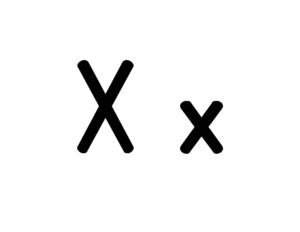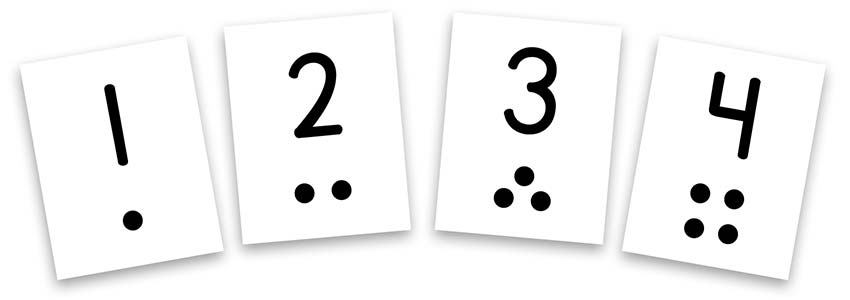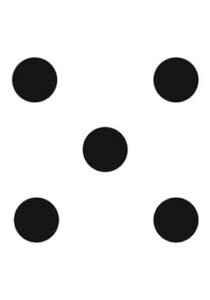Oral language, Letter knowledge
Children will interpret information presented in a book read aloud and increase the number of novel words they understand. Children will also identify and say the sound of the letter X.


New:
Review:
Be Prepared: This is the third of three repeated readings of a book with children. Today’s session focuses on children’s interpretation (explanations, reasoning) of information presented in the book. The session also will help children understand more novel words. From the list of novel words you identified prior to your first reading of the book, select 2–3 words to define for children today. See the Language/Literacy section of the ELM User Guide: 3–5 Years for additional information on how to select and define novel words.
 [Display letter X card.]
[Display letter X card.]
What is the name of this letter? What sound does the letter X make?
Letter X says /ks/, just like at the end of the word “fox.” /ks/, /ks/, fox. Let’s together say /ks/, /ks/, fox.
Now let’s spend some time with our book.
[See Week 3, Day 5 of Language/Literacy for a description and examples of how to approach today’s book reading. Key aspects are summarized below:
Number knowledge
Children will compare groups comprised of different amounts of items. Children will recognize numerals 1, 2, 3, and 4.


Review:
This week we learned many things about numbers. Let’s talk about some of the things we know.
We know what numbers 1, 2, 3, and 4 look like.
[Display large numeral cards 1, 2, 3, and 4, one at a time, and ask the following questions about each displayed numeral:]
[Point to each dot as you lead children in counting.]

We know how to compare groups of items. We can determine which group has more or fewer items.
[Hold up a group of three fingers and a group of five fingers.]
We also know that when we move items in a group, the group still has the same number of items. Let’s practice with a group of blocks.
[Arrange four identical blocks in a line, with space between each block.]
This week we pretended to go shopping. We counted the same number of food items as the number of dots on a card. Let’s try it again.
 [Display a card with five dots.]
[Display a card with five dots.]
How many dots are on this card? (five)
[Display basket of play food items.]
Let’s choose the same number of food items from our basket.
[Invite a volunteer child to count out the same number of food items from the basket. Display a card with more than five dots and invite children to count the number of dots as you point to each. Invite a different volunteer child to count out the same number of food items from the basket.]
Which group has fewer food items? How do we know?
This week we practiced comparing groups and finding which group has more or fewer. We are also learning more about numbers one, two, three, and four.
Extra support
Enrichment
Provide small cups and 3–4 manipulatives of different types (counters, large buttons, pom-poms, beads, etc.). Encourage children to sort the manipulatives into the cups, with each cup holding a different kind of manipulative. Encourage children to determine which group (cup) has more or fewer. Are any of the groups equal?
Encourage school-age children to read Sort it Out! (Arbordale Collection) by Barbara Mariconda and sort a variety of buttons by different attributes. Examples: shape, size, color, number of holes. Invite children to count the number of buttons in each group and determine which group has more (or fewer).
Good health practices
Children will understand ways to help their body take a rest.

None

Review:


Yesterday we talked about how our bodies need to rest. We rest by taking a break from what we are doing and by relaxing our bodies. We can rest by sitting or lying down. We can rest by taking a nap or sleeping for a long time. We know that when we sleep, our eyes are closed and our mind and muscles are relaxed. It is important for our body to take a break from thinking and doing things.
What kinds of things did you do yesterday to rest your bodies?
Sometimes our bodies tell us when we are tired and need a rest. Our legs may start to feel heavy and hard to move when we are running or moving around a lot. This is how our body can tell us to sit or take a break from moving around.
We may yawn and rub our eyes when we feel tired. We may have a hard time keeping our eyes open.
Sometimes it is easy to fall asleep when we are tired. Our eyes close, and our mind and muscles start to relax. We do not pay attention to what is going on around us when we sleep.
Sometimes it is hard to fall asleep. Our body may be really tired but we may want to keep moving or thinking about things.
Do you ever have a hard time falling asleep? What happens?
We have learned some things to do to calm our minds and our bodies. When we calm our mind, our noisy thoughts get quiet. We know that concentrating on our breathing can help our body feel relaxed. Our body feels calm when we are relaxed.
Let’s practice concentrating on our breathing to help our bodies feel relaxed. As we breathe in and out, let’s put our hand on our stomach to feel how it moves as we breathe.
[Engage children in a brief period of concentrating on their breathing to help their bodies feel relaxed (Self-Regulation Week 10, Day 1).]
During the rest time in our classroom or at home, we may not fall asleep. But we can give our bodies a break from doing things by concentrating on our breathing or doing something quietly.
[Expand on the above idea by reminding children of your classroom’s expectations of how children can use rest time.]
Today we learned that concentrating on our breathing can help us rest our bodies by making our bodies feel relaxed. We can keep our bodies healthy and strong by taking a break from what we are doing and by resting our bodies.
Extra support
Enrichment
In the housekeeping center provide small boxes, such as shoeboxes, for children to use as beds for dolls/stuffed animals. Also, provide small blankets, pillows, and quiet lullaby music. Encourage children to pretend to put their dolls/animals to sleep. Children may also enjoy books to use in reading a bedtime story to their dolls/animals.
Celebrate sleepy times with a pajama day. Encourage children to wear their pajamas during the day. Work with parents to make sure the pajamas worn by children do not impede normal movements during the day.
Exploring Where We Live
Social Studies
Skill and Goal
Knowledge of social and physical environments
Children will understand places that may be found in a neighborhood.
Materials
Needed
*Printables provided
Key
Concepts
Review:
Today we are going to talk about pictures of places we might find in our neighborhood.
Today we talked about places we might find in a neighborhood. Which place was your favorite? Why?
Scaffolding Tips
Extra support
Enrichment
Center Activity
Supply *pictures used in today’s activity and Places in My Neighborhood by Shelly Lyons. Encourage children to match pictures with pictures in the book of the same types of place. The book describes a child’s experience at a clinic. Explain to children that a clinic and a hospital both help people stay healthy or get healthy. The book shows more places than the pictures provided for today’s activity.
*Printables provided
Family Child Care
Display *pictures used in today’s activity, one at a time. Encourage children to think about how they might use one or more of their five senses in each neighborhood place. Example: “This is a fire station. What can we see here? What can we hear here? What can we touch here?”
*Printables provided